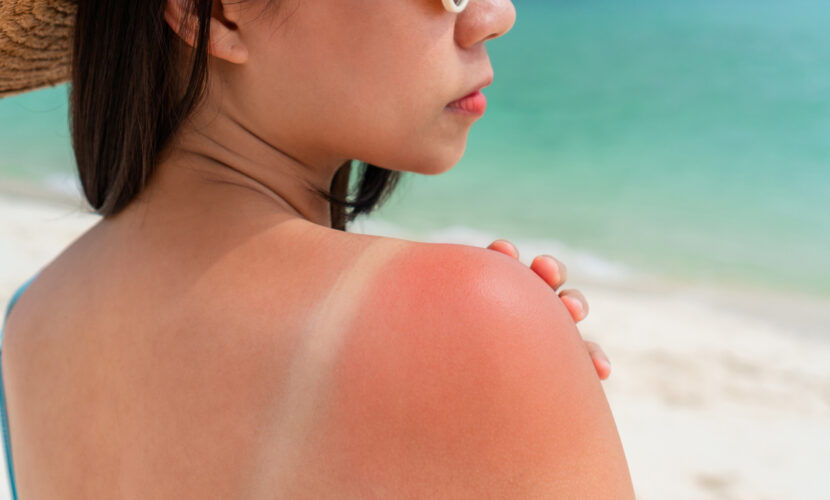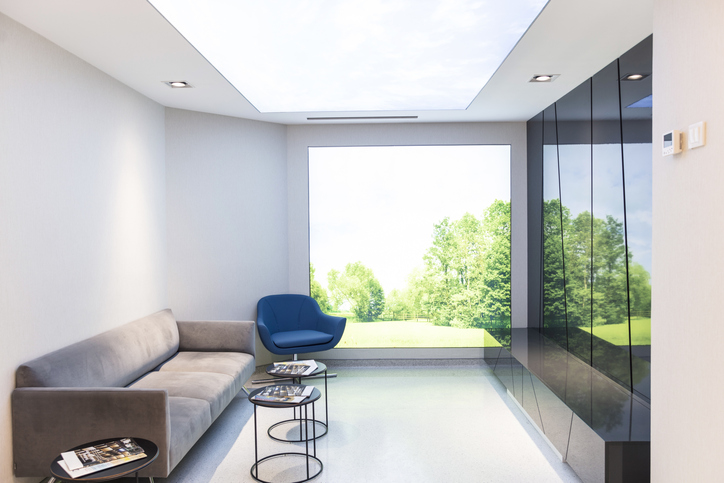As the summer sun gets stronger, we are concerned about the damage UV rays can do to our skin. While sunburn may appear healthy, it can actually cause blemishes, freckles, and even increase the risk of skin cancer. Summer UV rays are particularly intense, and failure to take proper precautions increases the likelihood of skin problems later in life.
This section details the importance of summer sun protection and how to do it. To enjoy this season of increased outdoor activities such as the ocean, swimming pools, and golf, be sure to take proper sun protection measures.

Graduated from the Faculty of Medicine, National Kumamoto University. After serving as the director of major beauty clinics in Japan, etc., he opened Aladdin Aesthetic Clinic in 2023. He is a professional in aesthetic medicine with a doctorate in anti-aging research and many years of experience. With the motto of "Toward the realization of cosmetic medicine without lies," he aims to be the "Only One" together with his patients.
Mechanisms and effects of summer sunburn

UV rays, which become more intense in the summer, affect the skin in many ways. There are two main types of ultraviolet radiation, UVA and UVB, each with different properties and effects. Understanding these differences is important for proper sun protection.
First, let's discuss UVA (long-wave ultraviolet radiation), which accounts for about 951 TP3T of all ultraviolet radiation and makes up the majority of the UV rays that reach the earth's surface. This ultraviolet rays fall on the earth's surface all year round, regardless of season or weather conditions; the longer wavelength of UVA allows it to reach deep into the skin and affect the dermis layer. This destroys collagen and elastin and reduces skin elasticity, causing wrinkles and sagging. In addition, UVA can oxidize melanin pigments, instantly darkening the skin.
On the other hand, UVB (medium-wavelength ultraviolet radiation) is about 51 TP3T of all UVB, but its energy is very powerful; UVB affects the epidermis of the skin, causing sunburn. The amount reaching the earth's surface increases, especially during the summer months, and often damages the skin in a short period of time. sunburn caused by UVB typically causes an acute reaction with redness, tingling, and pain in the skin. In the long term, it can also increase the risk of spots, freckles, and even skin cancer.
These ultraviolet rays are difficult to avoid in daily life and require appropriate countermeasures; the use of sunscreens and physical protection methods are effective in protecting the skin from both UVA and UVB rays. Since the effects of UVB rays are particularly intense during the summer, taking proper precautions is essential to maintaining beautiful skin.
The process of melanin production that causes sunburn
Understanding how sunburn occurs is important for effective sun protection. Sunburn is primarily a natural defense response of the skin to protect itself from ultraviolet radiation.
When UV rays hit the skin, they cause damage to skin cells. In response, the skin produces a pigment called melanin to protect the cells. Melanin is produced by cells called melanocytes, which absorb UV radiation and render it harmless. The following is the process of melanin production
- Ultraviolet irradiation
When UV light strikes the skin, it causes damage to skin cells. This stimulation activates melanocytes. - Activation of melanocytes
Melanin production begins when melanocytes are activated. Melanin is produced by an enzyme called tyrosinase, which absorbs UV light and protects skin cells. - Distribution of melanin
The melanin produced is taken up by cells called keratinocytes and distributed on the surface of the skin. This results in the darkening of the skin, a phenomenon known as sunburn.
This melanin production is a natural defense mechanism to protect the skin from UV radiation, but excessive UV exposure can negatively affect skin health. Prolonged UV exposure not only overstimulates melanin production, causing spots and freckles, but may also increase the risk of skin cancer.
How to choose a sunscreen
When choosing a sunscreen, it is important to check the SPF (Sun Protection Factor) and PA (Protection Grade of UVA) labels. SPF mainly indicates protection against UVB, and the higher the number, the stronger the skin protection against UVB. Generally, SPF 30 is recommended for daily use, but SPF 50 is recommended for prolonged outdoor activities or exposure to strong sunlight.
PA indicates protection against UVA, and there are four levels of PA, from PA+ to PA++++. The higher the +, the higher the protection. +The higher the number, the more effective the protection, and since UVA can reach deep into the skin and cause wrinkles and sagging, it is important to choose a sunscreen with a high PA.
Correct application and frequency
Sunscreen is best applied 15-30 minutes before going outside. Apply evenly and generously to exposed areas such as the face and neck. Do not forget to apply especially to areas prone to sunburn, such as the nose, cheeks, and behind the ears. When applying to the body, also apply thoroughly to shoulders, arms, legs, and other exposed areas.
It is also recommended that sunscreen be reapplied every 2 to 3 hours, as it is easily removed by sweat and water. Especially in the ocean or pool, be sure to reapply after getting wet or wiping with a towel.
And physical UV protection.
In conjunction with sunscreen, it is also effective to incorporate physical protection methods. Wearing a wide-brimmed hat can protect the face and neck from UV rays. Sunglasses not only protect the delicate skin around the eyes, but also prevent damage to the eyes caused by UV rays. Long-sleeved clothing and long pants are effective in preventing direct skin exposure to UV rays.
Parasols are particularly popular as an easy-to-carry UV-protection item. In particular, parasols with UV-blocking treatment are highly effective in protecting against UV rays. When outdoors, it is also effective to use sunshades to create shade and avoid direct exposure to ultraviolet rays.
Summer is the time for more outdoor activities! Sun Protection by Location

Summer brings more outdoor activities and more exposure to ultraviolet rays. Whether at the beach or pool, golfing or running, it is important to take appropriate sun protection measures for each situation. Here, we will explain in detail sunburn protection by location.
Sun protection at the beach or pool
Because of the frequent wetting of the ocean and swimming pools, it is important to use a water-proof sunscreen. Water-proof sunscreens are resistant to water and remain effective for a long time. However, they are not completely waterproof, and it is recommended that they be reapplied after swimming or after wiping with a towel.
Rash guards are also an effective protection against UV rays. By covering the skin well, they prevent direct UV rays from hitting the skin. A number of recent rash guards are available with UV protection, making them even more effective.
In addition, swim caps are also effective in preventing sunburn on the scalp. Swim caps can protect the scalp, especially the thinning of the hair and the area around the ears, which are prone to sunburn. If not a swim cap, a beach hat or similar item can also be used.
Measures to be taken while golfing or running
Easy-to-use sunscreen sprays are convenient for golf, running, and other sports. Spray-type sunscreens are suitable for use during exercise because they do not become sticky when sweating and dry quickly. They can also be applied evenly over a large area, providing effective UV protection in a short time.
Arm covers and neck guards are also useful for long outdoor activities. Arm covers protect the skin from UV rays by covering the entire arm. Neck guards are also effective in preventing sunburn on the back of the neck and décolleté area. These items should be breathable and designed to block UV rays while keeping you cool.
Are indoorers safe? Indoor Sun Protection
Although sun protection is primarily focused on outdoor care, the effects of UV rays can actually be felt indoors as well. It is important for even indoor people to take adequate UV protection.
In fact, UVA can enter the room through window glass and damage the skin. UV protection is especially necessary if you spend a lot of time in sunny rooms or are often near windows. For example, by applying UV-cut film to window glass, the amount of UV rays entering the room can be greatly reduced; UV-cut film not only blocks UV rays, but also lowers the room temperature, helping to save money on air conditioning in the summer.
In addition, closing curtains and blinds during the daytime can prevent UV rays from entering the room. In particular, UV-cut curtains can provide even more effective protection against UV rays.
Don't forget to take care of yourself after sunburn! Summer Sun Protection

Care after sun exposure is critical to maintaining skin health. Adopting proper skin care and recovery methods can help minimize sun damage and accelerate skin recovery. Here we will look at effective ways to care for your skin after sun exposure.
How to take care of skin after sunburn
Post-sunburn skin is very delicate and requires prompt and gentle care. The first step is to cool the sunburned skin. Cool down the skin by gently rinsing it with cool water or using a cold compress. Cooling helps reduce inflammation and relieve pain.
Aloe vera gel, for example, is very effective in post-sunburn skin care. Aloe vera has anti-inflammatory and moisturizing properties that support skin recovery. Applying aloe vera gel immediately after sun exposure can reduce skin redness and soreness and moisturize the skin. Cooling sheets are also useful. Cooling sheets can be used to continuously cool the skin and reduce inflammation.
How can I speed up skin recovery even more?
Nourishing and moisturizing the skin after sun exposure is essential. Use plenty of moisturizing creams and lotions to replenish moisture lost due to sun exposure. Products containing hyaluronic acid and ceramide are especially effective in moisturizing and helping to prevent dryness.
Moisturizing is extremely important because skin tends to dry out easily after sun exposure. Use moisturizing creams and lotions to ensure that the skin is well hydrated. In addition, use serums and creams containing vitamins C and E to provide antioxidant properties and promote skin recovery. Nutrition from the inside is also important. A balanced diet, rich in vitamins and minerals, supports skin health.
Use of whitening serums
Sunburn can cause skin blemishes and hyperpigmentation. To prevent such problems, the use of whitening serums is effective. Serums containing ingredients such as vitamin C derivatives, arbutin, and niacinamide can be used to suppress melanin production and maintain an even skin tone. Whitening serums can be incorporated as post-sun care to maintain healthy skin while keeping it bright.
Summer heat! The Relationship Between Diet and Sun Protection

Sun protection is not only an external approach, but also an internal one. Nutrients taken in through diet support skin health and recovery from UV damage.
Antioxidant foods and supplements
| nutrient | effect | Foods Containing |
|---|---|---|
| vitamin C | Antioxidant action, reduction of UV damage | Citrus fruits (orange, lemon, grapefruit), strawberries, kiwi, bell peppers |
| vitamin E | Antioxidant action, protection of cell membranes | Almonds, hazelnuts, sunflower seeds, avocado |
| carotenoid | Acts as pro-vitamin A to protect skin from UV damage | Carrots, pumpkin, tomatoes, spinach |
| lycopene | Strong antioxidant properties, protection from UV rays | Tomatoes, etc. |
In addition to external care, an internal approach to sun protection is also very important. Nutrients taken in through diet support skin health and recovery from UV damage. Here, we will discuss antioxidant foods, supplements, and ingredients with whitening effects in detail.
An active intake of antioxidant-rich foods is an effective way to reduce oxidative stress caused by UV rays. First, vitamin C is a powerful antioxidant and can help reduce the damage caused by UV rays. It is abundant in citrus fruits (oranges, lemons, and grapefruits), strawberries, kiwis, and bell peppers, and daily consumption of these foods can support skin health. Another option is to utilize vitamin C supplements.
Second, vitamin E is also an excellent antioxidant and helps protect the skin. It is found in almonds, hazelnuts, sunflower seeds, and avocados. Incorporating these foods as snacks is an easy way to supplement your vitamin E intake. Vitamin E reduces the formation of free radicals from UV rays and protects cell membranes.
In addition, carotenoids act as pro-vitamin A and protect the skin from UV damage. They are found in dark-colored vegetables such as carrots, pumpkin, tomatoes, and spinach, and tomatoes in particular contain lycopene, a powerful antioxidant. Lycopene protects the skin from UV rays and is essential for sun protection.
By actively incorporating these antioxidant foods and supplements, you can prevent UV damage from the inside out and maintain skin health. In addition to this, consuming foods that contain ingredients with whitening properties can help prevent spots and pigmentation after sun exposure and maintain bright, healthy skin.
Ingredients with whitening effects taken from the diet
As part of skin care after exposure to ultraviolet rays, it is also important to actively consume foods that contain ingredients with whitening properties. In addition to the aforementioned vitamin C, vitamin B group is another important nutrient. B vitamins promote cell metabolism and support skin regeneration. Vitamin B3 (niacin), in particular, is believed to have a whitening effect and helps maintain an even skin tone. It is abundantly contained in poultry, fish, eggs, and beans. A well-balanced intake of these foods can promote skin recovery after sunburn.
Polyphenols also inhibit melanin production and have a whitening effect. They are found in green tea, red wine, blueberries, and dark chocolate, etc. Consumption of these foods can prevent pigmentation caused by sunburn. By incorporating polyphenol-containing foods into your daily diet, you can maintain skin health and strengthen whitening measures from the inside out.
Thus, by actively consuming nutrient-conscious foods, you can take care of sun damage from the inside out and maintain beautiful skin. However, it is effective to maintain healthy skin by adopting a well-balanced diet to protect against sunburn, while being careful not to overdose.
summary
Summer sun protection is essential for beautiful skin. To prevent damage from UV rays, choose and use appropriate sunscreens and practice physical protection. Post-sun care and dietary support are also important.
Please enjoy summer while preventing skin problems by adopting the points introduced in this issue. To maintain healthy and beautiful skin, do not neglect daily care and enjoy summer activities to the fullest.
At Aladdin Aesthetic Clinic, based on our many years of experience in cosmetic medicine and cosmetic dermatology and the knowledge of our doctoral degree, we provide counseling that aims to be "only one", offering the best treatment for each person we meet. We offer only the necessary treatments without any unnecessary information or suggestions.
Feel free to use our official LINE account for 24-hour counseling and reservations. Please feel free to contact us for free counseling for the first time or if you have any concerns.






